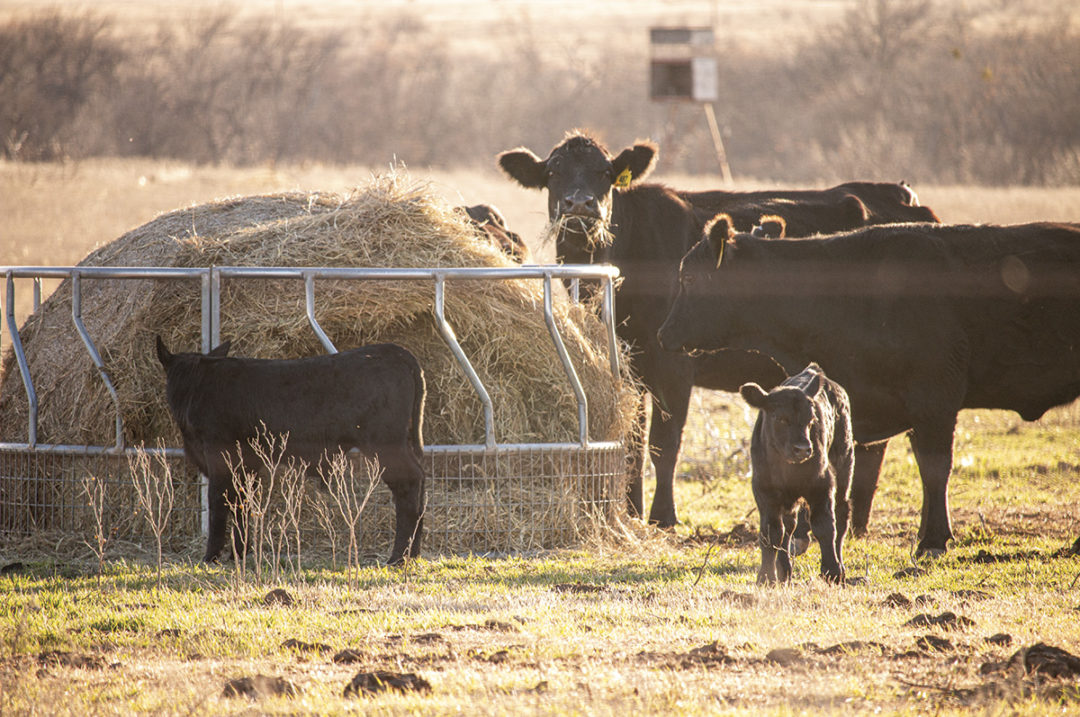Have you ever looked at a feed analysis and thought the information was confusing? A forage analysis is an important tool to improve profitability when developing nutritional programs for all classes of beef cattle. Understanding the feed test information is a solid step in harnessing the power of nutritional management. New forage crops that are harvested should be tested for both quality parameters and nutrient amounts. These values can vary widely depending on crop maturity, environmental influences, harvest timing and techniques. Furthermore, management decisions like the use of fertilizer and irrigation can also influence the nutrition found in forages.
As producers start to make plans for their forage needs, questions start coming up about how to read forage test results. This brings to the forefront the importance of both the testing itself and the understanding of the reports. Since feed is the single biggest cost in the production of livestock, nutrient density of forages will determine the value of the feed ingredients. When buying forages, remember that you are purchasing nutrition such as protein and energy. In drought-stricken areas, this is even more important, as low-quality forages are perceived as “cheap” due to price per ton but are actually very expensive when priced per nutrient.
A feed analysis can supply many measurements, but the basic analysis needed to make informed feeding decisions or ingredient purchases for a beef operation should contain results ranging from moisture content to mineral levels. Below are brief descriptions of these measurements, along with a few examples of how this information would be used when making decisions in a beef operation.
Moisture
The “as-received” basis will reflect the amount of water in the sample sent to the lab. Dry matter (DM) basis is the result when a sample has been dried until no moisture remains. Feedstuffs can vary greatly in water content; therefore, using DM values for diet formulations removes the moisture variability and assures that the diet is accurately balanced nutritionally. Moisture dilutes the nutrient content of the feed and does not provide any nutritive value. A fair representation of forages needs to have moisture content accounted for.
If a hay sample had a moisture content of 10%, then the DM of that sample would be 90%. Another hay sample might have an as-received moisture content of 15% and therefore a DM of 85%. When comparing these two samples, the first one would contain 1,800 pounds of DM per ton of sample, whereas the sample containing 15% moisture would only contain 1,700 pounds of DM per ton of sample. If each were priced at the same dollar amount per ton as received, the first sample would be a greater value if their nutrient composition were similar.
Crude protein (CP)
CP is determined by measuring the total amount of nitrogen present in the sample (including true protein and non-protein nitrogen) and then multiplying by 6.25. As plants mature, the resulting forage usually decreases in CP content.
When evaluating a forage with 10% CP on a DM basis – versus a 15% CP forage – one would look at how much protein is being supplied. If 2 pounds of CP were to come from either of these samples, and if they had the same DM content, the first sample would require 20 pounds of DM (2 pounds ÷ 10% = 20 pounds), while the second forage would only require 13.3 pounds (2 pounds ÷ 15% = 13.3 pounds) to supply the same amount of CP.
When buying forages, one might figure the cost of the feed by noting how expensive each pound of CP is. Price per pound of CP can be calculated by simply dividing the cost per ton of the forage by the number of pounds of CP that are supplied in that ton of forage. To determine pounds of protein in a ton of forage, multiply 2,000 pounds by the DM percentage and then multiply that number by the CP percentage. For example, if a forage with 90% DM costs $100 per ton as received, with a CP level of 10% on a DM basis, the price per pound of CP would be 56 cents ($100 ÷ [2,000 pounds × 90% × 10%] = $0.556).
Acid detergent fiber (ADF)
ADF is the portion of fiber that consists of cellulose and lignin. These are the least digestible components of the plant. ADF relates to overall forage digestibility and is used to calculate total digestible nutrients and net energy. A high ADF value indicates a lower energy value.
Neutral detergent fiber (NDF)
The NDF is the fiber fraction containing the plant cell wall components that are part of the structure of the plant. It is composed of hemicellulose, cellulose and lignin. NDF is a predictor of voluntary intake as it provides bulk or gut fill. In general, low NDF values are desired because NDF increases as forages mature.
Macrominerals
Macrominerals are those utilized as a percentage of the diet. These minerals, which are needed in larger quantities, are calcium, phosphorus, potassium, magnesium and sulfur.
Trace minerals
Trace minerals are those utilized in small amounts and reported in parts per million. Some of these are copper, manganese, cobalt, zinc, iodine and selenium.
Total digestible nutrients (TDN)
TDN is the estimated percentage of digestible carbohydrates, protein and fat. If a producer wanted to supply 16 pounds of TDN, then a forage with 58% TDN and 10% moisture (90% DM) would need to include 30.65 pounds of hay to meet the energy goal (16 pounds ÷ 58% TDN ÷ 90% DM = 30.65 pounds).
Net energy (NE)
Net energy for gain (NEg) is an estimate of the energy value of a feed used for bodyweight gain above that required for maintenance. Net energy for maintenance (NEm) is an estimate of the energy value of a feed to maintain animal tissue without gain or loss of weight. Net energy for lactation (NEl) is an estimate of the energy value of a feed used for milk production and body maintenance. When formulating rations, the NE values are useful in determining the optimal energy to accomplish producer objectives.
Many times, questions surround relative feed value (RFV) and relative forage quality (RFQ). RFV is the prediction of feeding value that combines both estimated intake (NDF) and digestibility (ADF) into a single index. RFV is used to evaluate alfalfa hay and is commonly used as a quality measurement when buying or selling those forages. RFQ combines predicted intake (NDF) and digestibility (ADF) but uses different formulas for grasses and legumes. Neither is used in diet formulation, but both can prove valuable when quickly comparing forages.
Don’t let all these numbers confuse you. Data from your forage samples can help you make more educated decisions, decisions that affect your bottom line. With the right tools and a little understanding of your forage analysis, you can increase your forage-purchasing savvy while providing more precise, balanced nutrition to your beef herd. Your feed dealer can point you to technical information and expertise to help you match forages with the correct supplementation, or to help with ration formulation.
This article originally appeared on the Hubbard Feeds blog on Aug. 16, 2023, and is used with permission.











